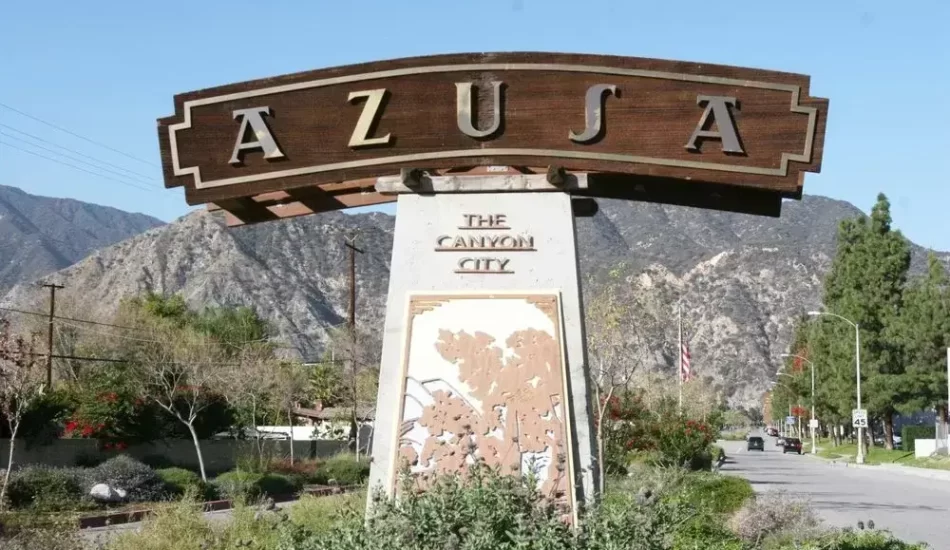|
|
Last Modified on Oct 16, 2023
What’s the Origin of the Word Azusa?
The city of Azusa, in the foothills of the San Gabriel Mountains about 25 miles northeast of Los Angeles, has a unique name that most people recognize, but have no idea of its origins. Many like to think that the name stands for “A to Z in the USA,” however that is not the case. When you look at the rich history of this city, you find that the name has much deeper origins, and the area is rife with activity for residents and visitors alike.
So, Where Does the Name Come From?
The “A to Z” version of the city’s name has roots in Jack Benny’s love for the city. The comedian who hosted a popular radio show had a running joke about how the name was an abbreviation. The town had everything one could be looking for in the United States.
The truth of the matter, according to historians, is that the name has roots in the word “asuksagna.” This Native American word can be roughly translated to “skunk place,” but the modern city is inhabited by a much more diverse population than those weasel-like mammals known for their pungent odor.
The City of Azusa in the Late 1800s
This popular town was founded in 1887 and became incorporated in 1898. Today it has a population of around 45,000 and sits on a little over nine square miles. Its Native American roots were first referenced in a diary belonging to Father Juan Crespi. Crespi was an engineer and diarist who traveled from San Diego through the Brea Canyon to the south with the Portola Expedition in 1769. The group was traveling north, searching for the Monterey Bay, but the river and valley in the Azusa area struck Crespi as a natural beauty worth noting in his diary.
Crespi named the valley and the stream San Miguel Archangel, as it was popular to name these areas after patron saints at the time, but also referred to the place as The Azusa. Although Anglo settlers had arrived by this time, there was still a majority populace of Shoshonean-Indian Native Americans, who were also called “Gabrieleno.” Their community was called Asuksa-nga, which is where the name is derived from today.
The History of the Area Before the Portola Expedition
Luis Arena acquired a three-square-mile parcel of land from the Mexican government through a land grant in 1841. As a farmer, he raised livestock and farmed the land while living in an adobe home that he built in the eastern part of the city. He called his home “El Susa Rancho” and lived there until he sold the property to an Englishman named Henry Dalton, who changed the name to Azusa Rancho de Dalton.
Mr. Dalton turned the ranch into a distillery and winery, planting a vineyard from the location of the house northward to the Sierra Madre Mountains. The estate also included a flour mill constructed with imported French millstones, a smokehouse, and a vinegar house. The flour mill proved to be quite lucrative when many others in the area were washed out in the great floods of 1861 and 1862, but Dalton’s remained intact.
Dalton’s Loss Leads to Azusa as We Know It Today
The United States government seized portions of Dalton’s land in 1860 and designated it for homesteading. Dalton attempted to fight this in court but had to take a loan from a Los Angeles banker named Jonathan S. Slauson to do so.
After 24 years of court battles, Mr. Dalton lost to the government and surrendered Azusa Rancho de Dalton to Mr. Slauson to cover his debt. In the transaction, Slauson deeded a 55-acre parcel to Dalton, where he started over.
Dalton and Captain J.R. Gordon brought the first imported honey bees to the country on his next business venture. They brought 15 stands of the Italian bees to the Dalton homestead, which eventually became a significant industry and spread across the United States.
Mr. Slauson laid out the town of Azusa in 1887, and locals stayed up all night to get a place in line to buy lots. Some even paid fees as high as $500 to secure a place near the front of the line. As the city was built and streets were constructed, Native American mortars were found throughout the entire area.
The city was finally incorporated on December 29, 1898, with 800 the following year.
The Native American Name Preserves a Bit of History
As with many parts of the United States, indigenous people inhabited Azusa’s area long before Europeans arrived. Tools used by these people, markings, and artwork on large boulders, as well as various other artifacts, prove that the Azusa Valley was bustling with activity before the city was ever thought of.
Some of the artistic markings left by the Native American people who once inhabited the area can be found on 80-ton boulders in the San Gabriel Canyon. Remarkably, these remnants of the indigenous peoples’ history have withstood the test of time.
There is a long line of stones, clearly put in place by humans near the mouth of the San Gabriel Canyon. It is believed that these stones were of great significance to Native Americans, although there is no substantial indication of their purpose or who put them there.
In addition to other signs of Native American civilization, a burial ground has also been found. The site contained the remains of seven individuals, and each had a stone cairn over the abdomen with a stone mortar on top.
The City of Azusa in the 2000s
A lot has changed in the 250 years or so since Father Juan Crespi first wrote about the area in his diary. The city of Azusa today is a modern suburb of LA, with a population of 50,000. It has all modern conveniences, such as golf clubs, museums, theatres, shops, bars, banks, and law offices. Luis Arena, Henry Dalton, and Jonathan Slauson would be proud to see the fruit of their endeavors.





